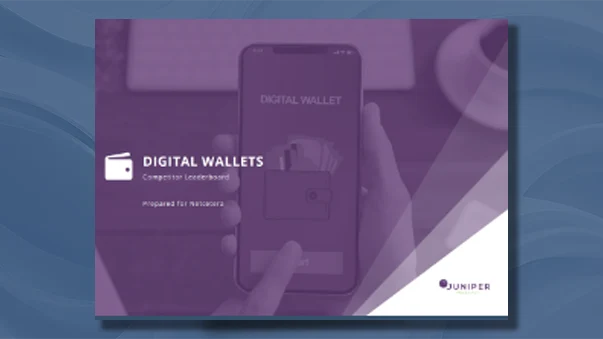In an era marked by rapid technological advancements and shifting societal norms, the banking sector faces new challenges in adapting to the expectations of younger generations. In this article, we provide insights into GenNext – term encompassing both Gen Z and Gen Alpha. It is imperative for banks to evolve and cater to this digitally savvy demographic with innovative, customer-centric, and sustainable Digital Banking solutions for the future.
Who are GenNext?
GenNow, or Millennials (born between 1981 and 1995), have been the focal point for years, making up the largest customer segment for banks at the moment. They have set the stage for the digital transformation in banking. GenNext comprises Gen Z (born between 1995 and 2010) and Gen Alpha (post-2010), representing a significant portion of today’s global population. This demographic, distinguished by its digital nativity, will be the customers in the future. So let us first dive into the details of what matters to them.
On the other hand, Gen Alpha is even more integrated with technology than any other generation before. It is often perceived as being born with smartphones molded to their hands.
Together, they pose a unique challenge for banks, prompting the question: Are Banks ready to meet the needs of GenNext?
Understanding Next Gen's expectations in terms of banking services
The digital interface between banks and their Gen Z customers already exists, but there is considerable room for improvement. Traditional banking services fail to meet the expectations of a generation accustomed to personalized and contextual experiences. Banking experiences offered by Revolut, Monzo, and Klarna are colorful and engaging. However, the integration of embedded experiences within contexts like BNPL, kids' banking, and the emphasis on UX and customer experience is pivotal. Success hinges on customer-centric design; without it, adoption may falter. Co-creation and actively listening to and involving customers, particularly the next generation, is vital. Embedding social media experiences has also been a significant topic at the event Bank der Zukunft in Munich. It underscored the trend towards more integrated, user-friendly banking solutions having in mind social media platforms.
The pillars of NextGen Banking should leverage the diversity of engagement opportunities, personalized experiences, and digital first mindset when it comes to customer-facing solutions. Banks need to ensure engaging experiences within the mobile banking app to keep the connection to their customers.
Financial Literacy in the digital world
Installing financial literacy for Gen Alpha from an early age becomes paramount. This generation is growing up in a world even more interconnected and digitally native than their predecessors. Many of them already have smartphones, though very few are aware of the aspects of potential cybercrime in the financial context. Recognizing the importance of early financial education, solutions like kids banking emerge as vital tools. They do not need to be designed as entirely new solutions, but as adaptable modules within the existing banking apps. The modules should seamlessly integrate the essential functionalities for kids into the existing digital banking solutions of the banks. By incorporating these educational features in existing mobile banking apps or their digital wallets, financial institutions can cater to the younger demographic both effectively and efficiently. This approach prepares Gen Alpha for a financially literate future and makes financial learning both engaging and intuitive.
The Digital Native's expectation from Banks goes beyond transactions
The relationship between banks and Gen Z customers shows a considerable misunderstanding and mismatch in expectations. Although 88% of bank executives think they understand what Gen Z needs, only 34% of Gen Z customers believe their banks truly comprehend their requirements. Furthermore, a significant 73% of Gen Z desires financial advice from their banks. This disparity highlights the necessity for banks to implement a more detailed and attentive strategy in addressing the needs of this generation.
Innovations in banking that resonate with Gen Z are very diverse. They include CO2 footprint analyses, gamification for financial education, and integrating banking services with social media and influencer insights. These examples illustrate the potential for banks to create more engaging, educational, and sustainable banking experiences that align with Gen Z's values and lifestyles.
Engagement begins with creating attractive experiences and designs: personalizing services to meet individual needs, offering opportunities to learn about financial tools and concepts (key to financial literacy), and implementing clear, understandable initiatives related to ESG (Environmental, Social, and Governance).
Personalized Customer experiences must be provided as banking can no longer afford to follow the one-size-fits-all approach when it comes to its digital channels. It's about contextual and smart opti-channel banking (the right service via the right channel). It is also about providing personalized financial tools that educate and empower customers while fostering a transparent and honest relationship with them.
Leverage technology is here to help. Besides the obvious AI examples, one could also look at biometric technology as an example and its impact on digital payments. Paying with a smile at the grocery store, or receiving authorization on a loan with a quick eye scan could also be made possible.
Through the banking or wallet apps, Banks have never been closer to their customers than they are today; they are on their mobile phones and are always within reach, but even that might not be enough today. Now banks need to ensure that the services provided via their mobile apps are equally accessible and engaging for their customers to use.
Build awareness and address the changes and evolution today for success in the future
In embracing the vibrant, diverse, and digital-first approach that Gen Z demands, banks have the opportunity to redefine the banking experience. They can make it more inclusive, personalized, and engaging for the future. The journey towards NextGen Banking is not just about technological advancements but about building meaningful relationships with Gen Z. This will ensure that banks remain at the forefront of innovation and customer satisfaction in the digital era.
The goal is not just to attract Gen Z customers to your bank, but to keep them engaged over the long term. This approach requires a shift beyond traditional banking towards a future where customer engagement, sustainability, and digital innovation are at the forefront of the banking experience.
Explore our mobile wallet or mobile banking applications, and feel free to reach out to our experts for further information.
More stories
On this topic

